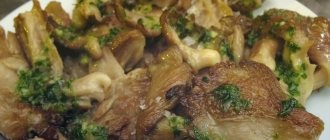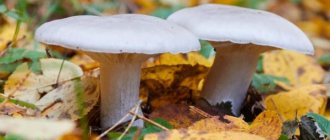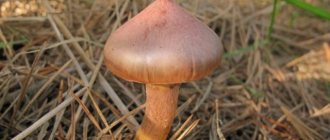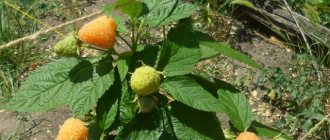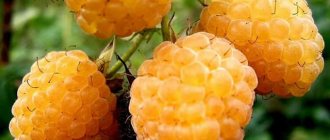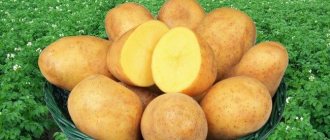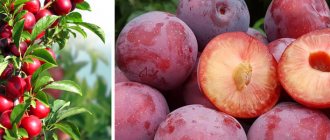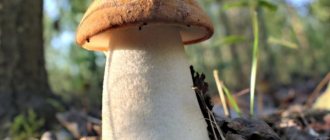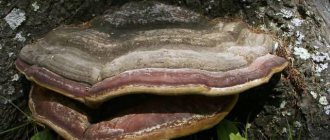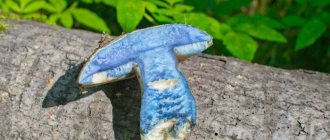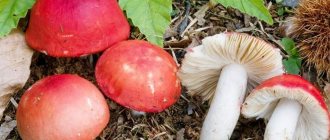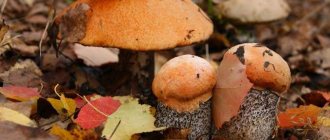Where do light yellow russulas grow?
Yellow russula prefer to grow in birch forests or mixed birch-pine forests. They live exclusively under birch trees, with which they form mycorrhiza. Often found in damp places and along the edges of swamps, as well as on peat bogs. Yellow russulas love mossy areas with little grass cover and grow among fallen leaves. They are found both singly and in whole groups, sometimes forming arcs or circles.
Comment! “Witch’s ring” is a group growth of mushrooms in the shape of a regular circle, formed as the mycelium grows from the center to the sides.
The fruiting period is from July to mid-October. The growth of yellow russula begins earlier than other autumn mushrooms; frequent neighbors in the forest are:
- boletus;
- thin pig;
- float yellow-brown.
Even in dry summers, when other mushrooms stop growing due to lack of moisture, this variety continues to actively bear fruit, giving the mushroom picker no reason to come out of the forest with an empty basket.
Places of growth
Yellow russula is widely distributed throughout the deciduous forests of Eurasia. It can be found in central Russia, in European countries, in Siberia, the Urals and Altai, in the Far Eastern forests. The mushroom forms mycorrhiza with birch, therefore it is its constant companion.
In Russia, yellow russulas live in damp lowlands, along the edges of wetlands and sphagnum bogs. Most often they colonize light pine-birch mixed forests, but they are also common in deciduous biotopes containing different types of birch. They are found in moss and in areas occupied by blueberries. It is a forest mushroom and cannot be found in the field or in human-inhabited areas.
Yellow Russula can often be found in pine and birch forests
Depending on the distribution, it is sometimes found in small groups or single specimens. It coexists with other species of russula, creating colorful, variegated communities. Next to the russula grow boletus mushrooms, thin pig mushrooms, and floater mushrooms.
Fruiting begins in mid-July, after which golden russula are available to mushroom pickers until the end of September - mid-October, if there is no frost.
Photo and description of yellow russula
Yellow russula at a young age has a hemispherical cap, which opens up as the mushroom grows, first becoming flat and later funnel-shaped. The diameter of the cap under favorable conditions sometimes reaches 10-12 cm. The edges are even, the skin is smooth and dry, slightly sticky in inclement weather, and easily separated from the pulp. The reverse side of the cap is lamellar, at the base of the stem it is white, closer to the edge it is yellowish. In old mushrooms, the plates acquire a grayish tint and brown spots appear on them.
The pulp of yellow russula has an elastic structure consisting of small fragile plates; as the fruiting body ages, it becomes loose. When broken or cut due to contact with air, it turns gray in color. The spores are shaped like a spiky egg, and the spore powder is ocher-colored.
The stem of Russula claroflava is cylindrical, even, smooth, and dense. In young specimens it has a boiling white color, in old ones it gradually turns gray, voids appear inside, and the pulp becomes like cotton wool. The diameter of the leg is usually 1-2 cm, height – 5-10 cm.
Advantages
Yellow russula is considered a good tasty mushroom. The raw pulp has a sweetish, slightly pungent taste, with a nutty undertone. It has a pleasant aroma reminiscent of rose petals. In European countries it is considered a delicious variety of mushroom and is valued on a par with champignons: young fruiting bodies are added raw to dishes.
You can also prepare dietary dishes from russula
In Russia, yellow russula does not have a very good reputation: it is rarely collected due to its fragility. Fruiting bodies are often affected by worms at a young age, so collecting a lot is quite difficult.
The mushroom is loved for its good taste. It can be prepared in a variety of ways:
- Boiling is carried out for only 10-15 minutes. During heat treatment, the flesh becomes slightly denser and acquires a grayish tint, and the skin of the cap loses color.
- You can fry without pre-boiling. The most common recipes are with potatoes or separately, in butter.
- Russulas are most often stewed in sour cream, lightly fried beforehand to enhance the delicate taste.
- For salting and marinating, young, strong mushrooms are used, which are lightly boiled before adding spices. It is not necessary to remove the skin from the cap: this saves time and gives the pulp strength.
- Russulas can be dried. The dried mushroom becomes pale ocher and fragile. Suitable for making soups, stews. In the form of mushroom powder it can be used as a flavoring additive.
- Frozen mushrooms are used in the same way as fresh ones.
Processing russula is not difficult: you need to sort the mushrooms, clearing them of debris and leaves. It is not advisable to use crumbled or badly broken ones for food, especially after long-term transportation. Before cooking or canning, the fruiting bodies are not soaked, only washed, removing any remaining soil.
Benefits and harms
Mushrooms of the genus Russula are rich in vitamins B2, C and PP. Also includes:
- phosphorus;
- iron;
- potassium;
- magnesium;
- calcium.
This is a low-calorie product, appreciated by nutritionists and vegetarians. 100 g of product contains only 19 kcal. The nutritional value:
- proteins – 1.7 g;
- fats – 0.7 g;
- carbohydrates – 1.5 g.
Eating mushrooms quickly satisfies the feeling of hunger and does not lead to obesity. However, children under 7 years of age, pregnant and lactating women should avoid eating such dishes. Russulas have a beneficial effect on the human body:
- increase hemoglobin levels;
- relieve swelling;
- strengthen blood vessels;
- activate creative activity;
- relieve hangover syndrome;
- normalize the emotional background during menopause;
- restore libido;
- remove toxins and waste;
- prevent the formation of blood clots and blood thickening.
Warning! The daily intake of mushrooms for an adult should not exceed 150 g.
Athletes of aerobic sports often include this product in their diet during breaks between intense workouts, while bodybuilders, on the contrary, refuse mushrooms, especially during the drying period.
Doctors strongly do not recommend consuming yellow russula for diseases:
- kidney;
- gallbladder;
- liver;
- Gastrointestinal tract during exacerbations.
Russula blue-yellow
Another type of edible mushroom. It grows in mixed forests, forming a symbiotic association with the roots of deciduous plants such as birch, oak, and aspen. It begins to grow from the beginning of June until the first days of September.
The russula cap is quite large, can reach fifteen centimeters in diameter, and is two-colored (the color of the cap is usually green or brown, and the edges have a purple tint). The surface is wrinkled and fibrous.
The plates are wide and silky, light cream or white.
The stem of the mushroom is also large, about seven to twelve centimeters in length and two to three centimeters in thickness. The color is white with a purple tint.
The pulp is light, strong, very tasty after cooking in the form of a pickled or salted product.
False look-alikes of yellow russula
Novice mushroom pickers can easily confuse yellow russula with its poisonous counterpart, the bright yellow fly agaric (Amanita gemmata), which has hallucinogenic properties. It can be distinguished by white flakes on the cap, a characteristic thickening of the stem at the base and a membranous ring. The pulp of the inedible mushroom exudes a faint radish odor.
Comment! In southwestern France, the bright yellow fly agaric is eaten, but in Germany it is considered deadly.
In addition to the fly agaric, its closest relative, the gall russula (Russula fellea), can be mistaken for the yellow russula. This variety is distinguished by a light ocher or straw-yellow shade of the cap, which fades to beige as the mushroom grows. The pulp of gall russula smells like geranium and has an unbearably burning taste.
Instead of yellow russula, which has a mild taste without bitterness, you can collect ocher russula (Russula ochroleuca) in coniferous forests. They are also edible, but their taste is more mediocre. The ocher variety can be distinguished by its lighter plates; its flesh does not change color in the air. They prefer to settle in dry places and are found under pine and spruce trees, which is unusual for the yellow species.
Appearance
hat
The diameter is from 4 to 10 cm, the cap is convex at first, then flattens, often the center is slightly depressed. Bright yellow, sometimes ocher yellow, the surface is smooth when dry and sticky when wet. The cuticle peels off halfway to the center, the flesh under the cuticle is white, slowly turning gray where it is cut or broken.
Gills
The hymenophore plates are attached to the stem, sometimes not, quite numerous, forked gills are pale buffy, gradually darkening as the fruiting body ages.
Leg
10 to 20 mm in diameter and 4 to 10 cm in height, the brittle legs start out white, then turn gray with age or when damaged. The flesh is also white and there is no ring on the stem.
The spores are ellipsoidal, 8-9.5 x 6.5-8 µm, decorated with blunt, mostly isolated warts up to 0.6 µm in height with only a few connecting threads. The spore seal is pale ocher-yellow. No significant odor, mild or slightly pungent taste.
How to cook yellow russula
Edible yellow russula, photos of which attract the eye with rich colors in yellow and white tones, lose their attractiveness during heat treatment, becoming gray. However, this does not detract from their taste. Mushrooms are suitable for drying, they are:
- marinate;
- salt;
- stew;
- fry;
- frozen.
Experienced cooks advise pre-soaking russula in cold water, this way you can get rid of a possible bitter taste. Next, they are boiled for 15-30 minutes, drained in a colander, after which they proceed to salting, marinating and frying. Salted russula seasoned with garlic, onions, pepper and sour cream are especially tasty. In some European countries this dish is considered a delicacy.
Comment! Yellow russula are ready for consumption a day after salting.
False poisonous doubles
In order not to confuse an edible mushroom with a poisonous one, visually similar in appearance to yellow russula, it is worth first studying the distinctive features with a description and photo.
Despite the many false brothers, the toadstool remains poisonous and dangerous to human health and life. Despite the greenish tint, novice mushroom pickers quite often equate one mushroom with another. You can exclude poisoning and intoxication of the body by studying the description of Amanita Phalloides:
- hat - marsh or green-gray, having a dome-shaped base or slightly elongated shape;
- the leg is light gray, having a small moire pattern;
- has a skirt on the base;
- aroma - absent due to a repulsive putrid aroma, reminiscent of the smell of a spoiled vegetable or root vegetable;
- when cut, it is not darker, leaving the flesh uniform in color.
Can there be poisoning from russula mushrooms?
It is believed that this mushroom is exclusively edible, but we should not forget about false doubles. Namely, false russula are poisonous. A small portion of these mushrooms that get into food will not cause severe symptoms. But with frequent use, disturbances in the gastrointestinal tract may occur.
You can be poisoned by russula if:
- if the mushroom grew in an area where waste and heavy metal salts accumulated
- if the mushroom picked and used for cooking is false russula
There are false russulas and those that are unsuitable for consumption.
Mushrooms and russulas, among other things, are a tasty product from which many dishes can be prepared. However, health and life are much more important than delicious food, so add only those mushrooms to your basket that you have no doubt about.
There are many types of russula
Russulas belong to the Russula , genus Russula . There are many of them in almost every forest. The differences between species are so insignificant that even mycologists sometimes classify russula as a certain species only based on characteristics and chemical reactions known only to them. When determining the species, all the nuances are taken into account: “early prostrate,” twisted or other cap, striped, tuberous or wavy edge, whole or cracking skin, how it separates, whether the plates emit “amber-colored drops,” whether they have “venous reticulation” or just spotty. The most important feature is even the color of the spores. Each russula cell is analyzed. Most mushroom pickers identify russula only by the color of the caps, which depends on the pigmentation of the skin. This unprofessional approach narrows the idea of russula.
We list only some of the most popular types. This is a gray russula, greenish (scaly), gray, blue-yellow, green, food, marsh, yellow, red, pungent, purple-red, beautiful, inconspicuous, kid, whole, blue (azure), brittle, related, golden yellow, golden red, brown, gall, forked, pale yellow, maiden, olive, lilac, black-purple, pink (Kele), fading and many others. Most of these russula are edible. They are classified into categories 3 and 4. The third category usually includes mushrooms of average taste and quality. They are collected when there are no mushrooms of the first and second categories. The fourth category includes those mushrooms that are edible but have no value. They are only for everyone. It turns out that my favorite mushroom, from which you can prepare a myriad of different dishes, has a very low mushroom rating. Even among mushrooms there is a hierarchy.
Preparation and storage
Yellow russula is a unique mushroom, which after heat treatment not only retains its benefits and taste, but also improves them. That is why many mushroom pickers hunt these mushrooms to prepare them for the winter. Moreover, the preparation and storage of russula does not require much time and effort.
So, you can preserve mushrooms in the following ways:
- freeze boiled ones;
- dry;
- prepare salted and marinated.
Are there false russulas?
In fact, all mushrooms that are called false russula have their own names. And they call them that only because they are indeed very often confused with real russulas. Often the real pale grebe is mistaken for a real russula, but at the same time it is called a toadstool. Conditionally edible or non-poisonous mushrooms, similar to russula, have their own names that correspond to the family and external distinctive features of the mushroom. It is worth knowing about the most famous representatives of Russula, which are most often mistaken for real Russula.
Description of the Russula family
Russulas belong to the genus of lamellar mushrooms of the order Agaricaceae of the Russula family.
Their fruiting bodies are fleshy and large.
You can recognize russulas in the forest by their bright, different-colored caps with a diameter of 2-20 cm, spherical, hemispherical, bell-shaped with white flesh and white even legs. You can read about what colors russulas are in the “Types of russulas” section. The caps of Russula mushrooms break easily, which reduces the economic importance of these mushrooms.
As they mature, they change their shape, becoming prostrate, flat and funnel-shaped, sometimes twisted. Mushrooms have adherent descending plates with a blunt or sharp edge. The color of the spores ranges from white to yellow.
Did you know?
In order to determine what type of russula is - lamellar or tubular, you need to look under the cap.
Its lower layer consists of many plates. Russulas grow in July, their mass appearance is recorded in August and early autumn. Basically, all of them are edible, only a small part of them is not suitable for food due to mild toxicity or unpleasant taste. Suitable for fresh and pickled consumption. They are included in the third category of edible mushrooms, which includes mushrooms of average taste. Some are classified below because they have no nutritional value.
Many may be interested in the question of what tree russula grows under.
The fact is that these mushrooms are mycorrhiza-formers with tree roots. They can often be found under deciduous trees: oak, birch, alder, as well as under spruce and pine trees. Russulas contain a number of useful substances, in particular vitamins - 1 kg of mushrooms contains 264 mg of vitamin B and 6 mg of vitamin PP.
Did you know?
The best ones for eating are considered to be russulas whose caps have more green, blue, yellow colors and less red.
Yellow types of inedible russula
The confusion with the edibility of russula is such that mushroom pickers often classify some yellow russula as questionable.
For example, light yellow russula (R. Claroflava) has a bright yellow cap, and its initially white flesh turns gray when cut, and even darkens when cooked, and this is not typical for most edible russulas. Even after studying edible and inedible photorussula, a mushroom picker can most likely confuse them. For example, ocher russula (R. Ochroleuca) with value (R. Foetens), since both mushrooms prefer moist forests. In R. Ochroleuca, when broken, the flesh also darkens slightly, has no smell, but has a very pungent taste. It differs from the yellow russula in color: while the latter has a clear and bright color, the ocher russula has a dirty yellow color.
Valuy, although it is considered a conditionally edible mushroom, is ignored by most mushroom pickers, since its flesh turns brown when broken, moreover, it smells unpleasantly of rancid oil and tastes hot and bitter. Valui for use as food must first be soaked for a long time, then boiled in several waters, which not every housewife will decide to do.
Therefore, for those who do not want to spend many hours at the stove, it is better, when collecting russula with light caps, to avoid those specimens that have an unpleasant taste and smell.
Golden-yellow russula (R. Risigalina), although edible, has an inexpressive taste. It is smaller in size than the yellow one, and its spore powder is egg-yellow.
How to distinguish false russula from real ones
Most often, in a basket with real russulas, there may be a burning-caustic or vomiting russula. Outwardly, it is very similar to the edible marsh russula, so it is difficult to distinguish it from real russula at first glance. But other false russula also often end up in mushroom pickers’ baskets. Anyone who has not seen false russula either in a photo or in person should be wary of the following signs of the fungus:
To finally be convinced that russula is false, you need to taste it in the literal sense of the word. This will not create any threat for a person, it will only cause slight discomfort in the form of a burning sensation of the tongue, which will go away after 15 minutes.
Russulas are quite widespread both in forests and small plantings. Due to the fact that these are the simplest and most numerous varieties, people do not pay enough attention when collecting them. However, this approach is incorrect, since among them you can find false species that are not edible.
Russulas are excellent mushrooms in terms of their taste and nutritional qualities.
Today there are several main false types of russula.
Moreover, some of them are noticeably different from each other, while others, at first glance, are completely identical. It is very important to know what such a mushroom looks like and to be able to distinguish edible from inedible, so as not to harm your health and not spoil the taste of mushroom dishes.
The first sign of difference between edible russula is the color of the cap. As a rule, the cap of edible forest inhabitants may have pale gray, greenish and brown shades. If there are bright red or purple spots on the cap, then most likely this is a false mushroom, which should be avoided.
Russula mushrooms – edible and inedible: varieties, when they appear, description, photo
Not every person, having learned that russulas are blue, green, or greenish, will believe this information. At the same time, these delicious mushrooms really are completely different, and each type has its own characteristic features.
- The loader is white. This type of mushroom is easily identified by the white color of its cap and stem. Much less commonly, the cape has a white cap with yellowish dots. These mushrooms can be found in the forest from mid-summer to mid-autumn, depending on the weather. Mushrooms are classified as edible.
Loader white
- Yellow russula. The cap of this mushroom is light yellow, while the stem is white. A distinctive feature of yellow russula is that its skin, which is located at the very edge of the cap, peels off very easily. You can often see a small depression in the center of the cap. These mushrooms are classified as edible and are collected from July to October.
Yellow Russula
- Green russula. This mushroom can easily be mistaken for poisonous, since its appearance is completely unattractive. The color of the cap is pale green with a yellowish tint. Despite its appearance, the mushroom is edible and very tasty.
Green russula
- Blue russula. This forest beauty has a blue-violet cap, and the blue can be very dark. The leg of this russula is white. The mushroom can be eaten.
Blue Russula
- Food russula. These mushrooms look very attractive. The cap of the russula is brownish-red in color with gray patches. The stem of the russula is white. You can collect such mushrooms from mid-summer to early autumn.
Food russula
- Swamp russula. Despite its name, the mushroom is quite beautiful. The hat is painted bright red with a brown tint towards the center. Young mushrooms have convex caps, old ones, on the contrary, have a depression in the center. The stem of this russula is white with a pinkish tint. Swamp russula can be collected from June to September.
Marsh Russula
- Greenish russula. A fairly large mushroom with a cap colored dirty green with gray and blue shades. Old greenish russulas have a convex cap. These mushrooms can be found in the forest throughout the summer.
Greenish
- Green-red russula. This mushroom is also quite large and has a brightly colored cap - red, yellow. The leg, like that of the greenish russula, is white with a pinkish tint. You can meet these mushrooms in July-September.
Green-red
- Blue-yellow russula. The cap of this mushroom is blue-violet with yellow splashes. The leg differs in that it is quite wide. Mushrooms are considered edible, but they do not have much nutritional value.
Blue-yellow russula
As for inedible russula, the following is important to say. Not all inedible russula are classified as poisonous mushrooms; many of these mushrooms simply have an unpleasant bitter and even burning taste, which is why they are not actually eaten. Others can cause mild disorders, minor disturbances in the gastrointestinal tract.
It is much more important to be able to distinguish russula from other truly poisonous mushrooms that are fatal, but more on that a little later.
- Birch russula. Most often, this mushroom has a pink-purple cap with a yellow tint, but other colors can also occur, for example, copper, red, etc. Young birch russula have a small feature - their caps are wavy at the edges. The leg is most often white with a yellow tint. The mushroom itself is very fragile. They can be found in the forest from mid-summer to early autumn. Many mushroom pickers believe that this type of russula is still edible, since all the toxins are in the upper film of the mushroom, which is easily cleaned.
Russula birch
- Red russula. This mushroom is much smaller in size than its counterparts, has a dark red color and a pink or white-pink stem. The mushroom has a characteristic tasty smell, but a very pungent and burning taste. Grows in August, September.
Red Russula
- Pink russula. The mushroom is colored in a delicate pink color; it appears in forests at the end of summer and grows until about the end of September. This mushroom tastes very bitter.
Pink
- Russula Kele. The appearance of the mushroom is very attractive; the cap has a beautiful dark burgundy, dark purple color. The leg, as a rule, has the same colors. The mushroom tastes sharp and hot, but it has a mushroom smell. Russula Kele is distinguished by its not very large size.
Kele
- Brittle russula . Most often, mushrooms of this species grow in large groups. The hat has a soft pink color around the edges, and a richer pink with a purple tint in the center. This mushroom is also small in size and has an unpleasant taste.
Brittle
- Russula Meira . It is better to avoid this mushroom, since it can easily provoke poisoning and disorders of the gastrointestinal tract. The color of the cap is very bright and rich red. The leg is most often white, but at the base it can be yellowish and brownish.
Maira
- Stinging russula. The shape of the cap is most often spread out, the color is red or pink-red. A distinctive feature is the sharp unpleasant smell and the same taste of the mushroom.
Russula
Acrid Russula
This type of mushroom is also considered conditionally unsuitable for food. According to some foreign sources, it even has a certain dose of toxicity, which is due to the minimal proportion of muscarine alkaloid found in the plant. However, mushroom pickers in our region sometimes use this russula in pickles (after thorough soaking and heat treatment).
Stinging or emetic are two more names for the fungus, indicating its bitter and pungent taste, which causes disturbances in the functioning of the gastrointestinal tract.
This russula has a small reddish cap (up to eight to nine centimeters in diameter) and a cylindrical pinkish leg (up to seven centimeters in height).
